 October 15, 2009 John E. Ross, KD8IDJ, Editor
| |||||||||
+ Available on ARRL Audio News + Three Killed While Erecting Antenna
+ Public Service: Ham Provides Rescue Support at Utah Marathon
While not as well known as the Boston and New York City Marathons, Utah's St George Marathon draws more than 7000 runners to the town of St George -- located 300 miles south of Salt Lake City, near the Utah-Arizona-Nevada border -- each year. The race, now in its 33rd year, uses shuttle vans equipped with Amateur Radio operators and medical personnel to provide any help and support needed along its course. On October 3 -- race day -- Brian Plumb, KE7HNW, was driving Shuttle #3, with Kathy Hutchinson, a nurse at a local hospital, by his side. Click here for more information. + Operating: Team Leaders Selected for WRTC 2010
Operating: Get Ready for JOTA This Weekend!
When Scouts want to meet young people from another country, they usually think of attending a quadrennial World Jamboree. But each year, more than 400,000 Scouts and Guides "get together" over the airwaves for the annual Jamboree-on-the-Air (JOTA). This year, JOTA celebrates its 52nd anniversary. JOTA follows a 48 hour schedule beginning at 0000 local time on Saturday, October 17, continuing through 2400 local time on Sunday, October 18. Click here for more information, including suggested frequencies, satellite operations, available resources and more. + Operating: After False Starts, Midway Island DXpedition off to Good Beginning
+ Operating: Hams On-the-Air to Support National Wildlife Refuge Week
+ Operating: ARRL DXCC Desk Approves FT5GA Operation
Hints & Kinks : Altoids Times Two Sam Green, W0PCE, of St Louis, Missouri, has a different take on those ubiquitous Altoids tins:
Many of us mount compact circuits in cases that previously contained mint candies. My friend Matt, W0XEU, suggested packaging more complex circuits in multiple Altoids tins by mounting them back to back, a simple yet elegant idea. I built this circuit in a "double-wide" arrangement because I needed somewhere to put the
batteries. This offered the added advantage of providing a means to filter bench power during development and testing so I wouldn't leak ambient RF signals into the main compartment with its very sensitive circuitry. I simply drill a hole near each corner to screw the boxes together. If you are careful with the placement of the holes you can even turn the arrangement around later to reverse the way the covers open. Otherwise, plan ahead. I feed power between compartments via a threaded coaxial feed-through EMI (electromagnetic interference) filter, with additional bypass capacitors for this very sensitive application. The threaded filter
serves in place of one of the screws that hold the cases together. I use conductive adhesive-backed copper tape as a gasket to minimize leakage into the shielded compartment that contains the sensitive circuitry. You can extend this method to additional compartments where you might want many stages of gain and you need to isolate and control the coupling between them. This is a very simple and effective way to prototype more complex circuits before you have to worry about customizing the packaging. Matt and I hope you will find this method useful. -- 73, Sam Green, W0PCE, 10951 Pem Road, St Louis, MO 63146, w0pce@arrl.net + Did You Know? The Wouff Hong
Every amateur should know and tremble at the history and origins of this fearsome instrument for the punishment of amateurs who cultivate bad operating habits and who nourish and culture their meaner instincts on the air. The Wouff Hong was invented -- or at any rate, discovered -- by "The Old Man" himself, just as amateurs were getting back on the air after World War I. The Old Man (who later turned out to be Hiram Percy Maxim, W1AW, co-founder and first President of ARRL) first heard the Wouff Hong described amid the howls and garble of interference as he tuned across a band filled with signals that exemplified all the rotten operating practices then available to amateurs (considering the state of the art as they knew it). As The Old Man heard it, the Wouff Hong was being used on some hapless offender so effectively that he investigated. After further effort, "T.O.M." was able to locate and identify a Wouff Hong. The Old Man never prescribed the exact manner in which the Wouff Hong was to be used, but amateurs need only a little imagination to surmise how painful punishments were inflicted on those who stoop to liddish behavior on the air. The Original Wouff Hong is on display at ARRL Headquarters. Find out more about this dreaded instrument of torture here. Amateur Radio in Space : Columbus Antennas to Take to the Skies
In February 2008, the new Columbus module -- built by the European Space Agency (ESA) -- was attached to the International Space Station (ISS). When ESA first announced its intentions for the module a number of years ago, the ARISS International team began planning how to get ham radio integrated. While ESA's blueprints were being drawn, hams made serious inquiries and gave presentations, eventually winning approval to have antenna feed-through connectors added to the module. ARRL ARISS Program Manager Rosalie White, K1STO, discusses the latest developments. + Events: Dayton Hamvention Crew Readies for 2010 Show
This Week on the Radio:
This week, look for the School Club Roundup October 19-23. There's an NCCC Sprint October 16. The Iowa QSO Party, the Feld Hell Sprint and the Microwave Fall Sprint are October 17. On October 17-18, check out the New York QSO Party, JARTS WW RTTY Contest, the Stew Perry Topband Challenge, the Worked All Germany Contest and the W/VE Islands QSO Party. The Illinois QSO Party is October 18-19 and the Run for the Bacon QRP Contest is October 19. Next week, you'll find another NCCC Sprint on October 23. The CQ Worldwide DX Contest (SSB), the CW and Digital runnings of the10-10 International Fall Contest, and the 50 MHz Fall Sprint are October 24-25. The SKCC Sprint is October 28. All dates, unless otherwise stated, are UTC. See the ARRL Contest Branch page, the ARRL Contest Update and the WA7BNM Contest Calendar for more info. Looking for a Special Event station? Be sure to check out the ARRL Special Event Station Web page. ARRL Publications : Check Out the November/December Issue of QEX
The ARRL Letter : HTML vs Plain Text Many people have asked how they can continue to read The ARRL Letter in a plain text format. ARRL IT Department Manager Jon Bloom, KE3Z, has provided instructions to do just that. According to Bloom, most e-mail reading programs provide some means of accessing the plain-text version if you want it. Unfortunately, we are not able to send out plain text versions (like the ones prior to October 1) of The ARRL Letter. If you like the look of HTML (including pictures and videos), but do not want to receive the Letter in HTML format, you can access current and archived editions via the ARRL Web site. TAPR Elects New Officers
Silent Key: Mathias Bjerrang, LA5NM/JW5NM (SK)
Organizational: ARRL Membership Newsletters, Bulletins and Notifications Did you know the ARRL offers more newsletters than just The ARRL Letter? One of the many ARRL membership benefits includes other newsletters, such as the ARRL Contest Update (a bi-weekly contest newsletter), the ARES E-Letter (sent monthly, containing public service and emergency communications news), the ARRL Club News, the ARRL Instructor/Teacher E-Letter and the VE Newsletter, to name a few. You can also elect to receive news and information from your Division Director and Section Manager (keep in mind that not all Divisions/Sections send notices), as well as W1AW bulletins that relate to DX, propagation, satellites and Keplerian reports. The ARRL also offers a free notification service to members, letting them know when their membership and license are due to expire. Sign up for these newsletters, bulletins and notifications on the Member Data page of the ARRL Web site. ARRL Continuing Education Course Registration
| |||||||||
 At approximately 8:40 PM on October 12, a man, woman and their 15 year old son were killed while trying to erect a 50 foot vertical antenna at the home of the man's mother, Barbara Tenn, KJ4KFF, in Palm Bay, Florida. The deceased were not licensed amateurs. According to police reports, Melville Braham, 55, Anna Braham, 49, and their 15 year old son Anthony were putting up an antenna -- Tenn's second -- at night when they lost control of the antenna and it crashed into nearby overhead power lines. The impact sent 13,000 volts of electricity through the pole that the three were holding. A family friend, a 17 year old boy, was on the roof at the time of the accident. He and the couple's daughter, who was in the house at the time, were not injured. Click
At approximately 8:40 PM on October 12, a man, woman and their 15 year old son were killed while trying to erect a 50 foot vertical antenna at the home of the man's mother, Barbara Tenn, KJ4KFF, in Palm Bay, Florida. The deceased were not licensed amateurs. According to police reports, Melville Braham, 55, Anna Braham, 49, and their 15 year old son Anthony were putting up an antenna -- Tenn's second -- at night when they lost control of the antenna and it crashed into nearby overhead power lines. The impact sent 13,000 volts of electricity through the pole that the three were holding. A family friend, a 17 year old boy, was on the roof at the time of the accident. He and the couple's daughter, who was in the house at the time, were not injured. Click 
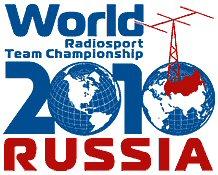 After a grueling selection process, the organizers of the 2010 World Radiosport Team Championships (
After a grueling selection process, the organizers of the 2010 World Radiosport Team Championships (
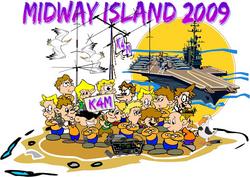 After the airplane scheduled to take the K4M DXpedition team from Honolulu to Midway Island developed engine trouble, there was doubt as to if the team would even make it to the island. But Murphy didn't get in the way -- mechanics found the necessary parts to get the plane in the air safely. After a four hour flight, the team arrived on Midway at 0700 UTC on Monday, October 12 to start operations. Originally scheduled to be on-the-air for 10 days (beginning October 9), the team might not be able to extend their time on the island, due to US Fish and Wildlife Service (USFWS) regulations. Click
After the airplane scheduled to take the K4M DXpedition team from Honolulu to Midway Island developed engine trouble, there was doubt as to if the team would even make it to the island. But Murphy didn't get in the way -- mechanics found the necessary parts to get the plane in the air safely. After a four hour flight, the team arrived on Midway at 0700 UTC on Monday, October 12 to start operations. Originally scheduled to be on-the-air for 10 days (beginning October 9), the team might not be able to extend their time on the island, due to US Fish and Wildlife Service (USFWS) regulations. Click  The KP1-5 Project -- organizers of the 2009 Desecheo Island DXpedition -- is pleased to announce that Amateur Radio operators will be operating in observance of the 2009 National Wildlife Refuge Week, on the air October 10-18. This event features scores of festivals and special events that help connect people with nature at the country's 547 National Wildlife Refuges. Click
The KP1-5 Project -- organizers of the 2009 Desecheo Island DXpedition -- is pleased to announce that Amateur Radio operators will be operating in observance of the 2009 National Wildlife Refuge Week, on the air October 10-18. This event features scores of festivals and special events that help connect people with nature at the country's 547 National Wildlife Refuges. Click 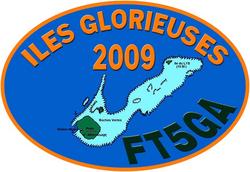 ARRL DXCC Manager Bill Moore, NC1L, reports that the FT5GA operation on
ARRL DXCC Manager Bill Moore, NC1L, reports that the FT5GA operation on 
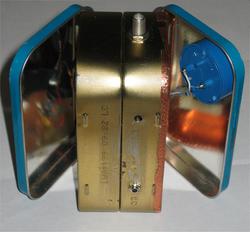
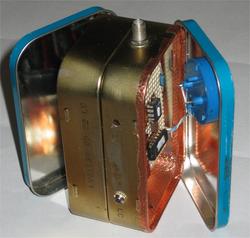


 Organizers of the 2010
Organizers of the 2010 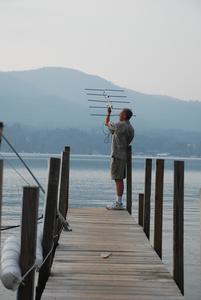
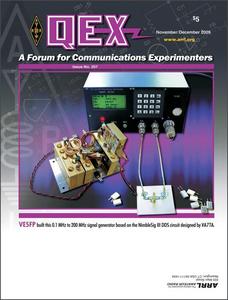 The November/December issue of
The November/December issue of  At the recent ARRL and TAPR Digital Communications Conference (
At the recent ARRL and TAPR Digital Communications Conference ( Noted DXer Mathias Bjerrang, LA5NM/JW5NM, passed away October 11. He was 67. While in Svalbard, Norway, Bjerrang slipped and fell while walking, hitting his head and was later found Sunday morning, cold and unable to speak. He was brought inside where he later stopped breathing; he was unable to be resuscitated and died. A native of Norway, Bjerrang went on many cold weather DXpeditions, including the North and South Poles. Many times, he provided the sought-after double multiplier of Zone 40 and Svalbard in contests. Bjerrang earned
Noted DXer Mathias Bjerrang, LA5NM/JW5NM, passed away October 11. He was 67. While in Svalbard, Norway, Bjerrang slipped and fell while walking, hitting his head and was later found Sunday morning, cold and unable to speak. He was brought inside where he later stopped breathing; he was unable to be resuscitated and died. A native of Norway, Bjerrang went on many cold weather DXpeditions, including the North and South Poles. Many times, he provided the sought-after double multiplier of Zone 40 and Svalbard in contests. Bjerrang earned 







